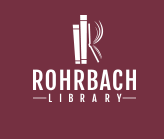Publication Date
4-1-2017
Abstract
Sighted people often overestimate the usefulness of tactile diagrams for blind people who need to perceive and comprehend entities and relationships in visual structural graphs. Sighted software developers can acquire an overview of the structure of a Unified Modeling Language (UML) design diagram after a quick visual scan. Blind developers using tactile diagrams are impeded by the serial nature of scanning these diagrams with their fingers. However, blind programmers are experts at using text-to-speech screen readers to verbalize lines of existing code at a very rapid rate. Comprehending and debugging code with a screen reader happens extremely quickly because blind developers have a lot of practice using such tools. This paper reports on using a block-structured diagram description language with syntax and keywords similar to modern programming languages to capture and communicate entities and relationships in standard UML diagram types. Prototype software tools include utilities for verifying textual UML models, for converting between textual representations useful to blind versus sighted programmers, and for generating visual diagrams for communications with colleagues. Creating this language in support of a blind student in an object oriented design course helped to accelerate acquisition and communication of design concepts among students and the instructor.
Creative Commons License

This work is licensed under a Creative Commons Attribution 4.0 International License.
Recommended Citation
Proceedings of the 32nd Annual Spring Conference of the Pennsylvania Computer and Information Science Educators (PACISE) Edinboro University of PA, Edinboro, PA, March 31-April 1, 2017.



Comments
The PA statewide PACISE conference does not execute a transfer of copyright. It requires only permission to publish. Therefore, I am submitting this paper under Creative Commons Attribution 4.0 International (CC BY 4.0).